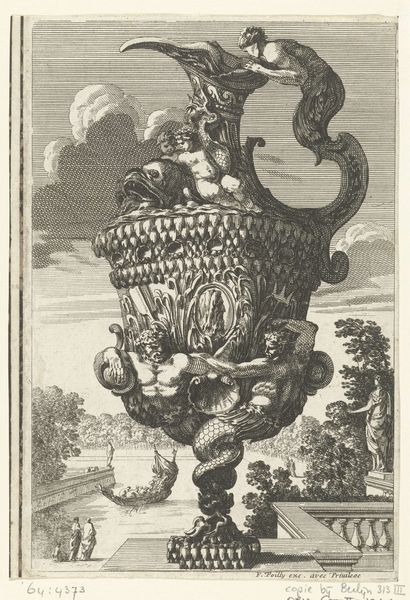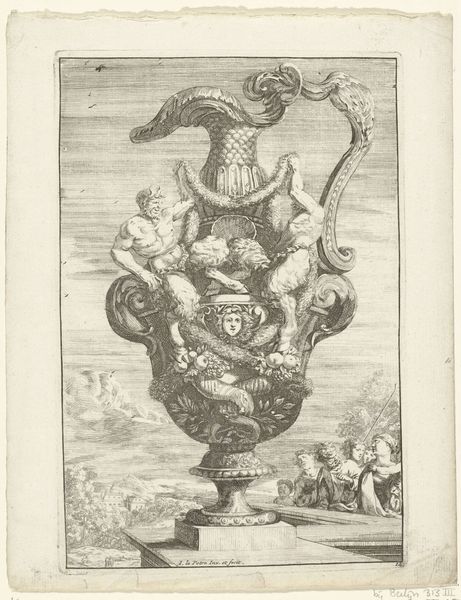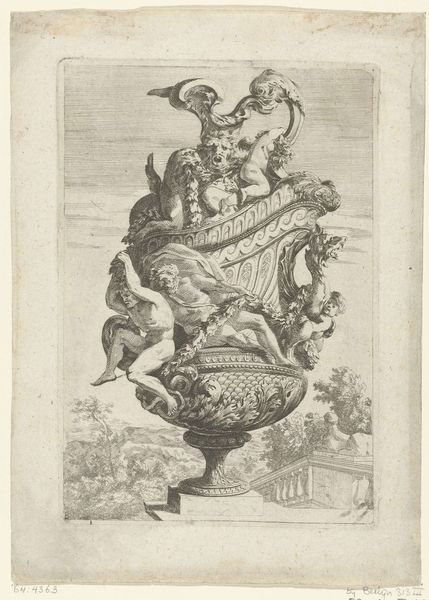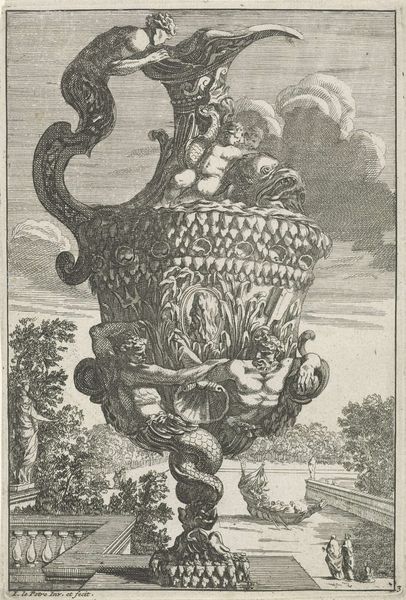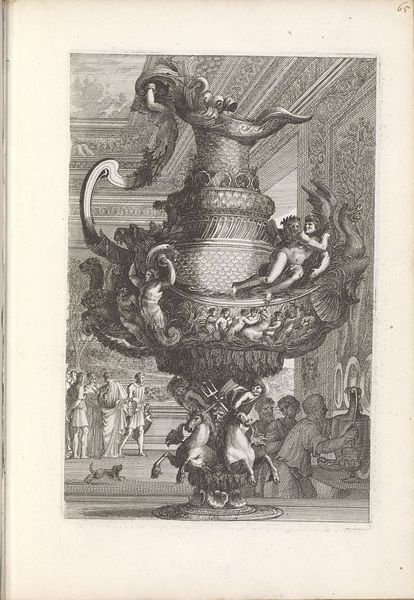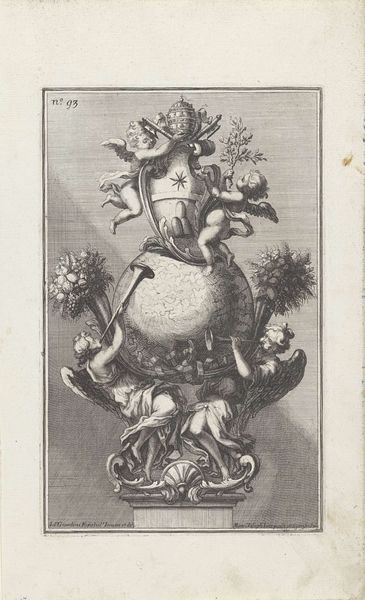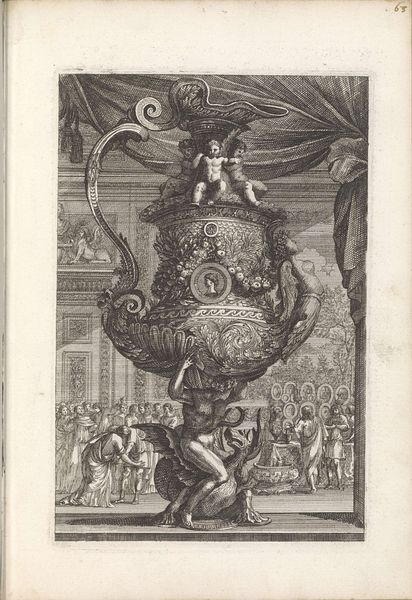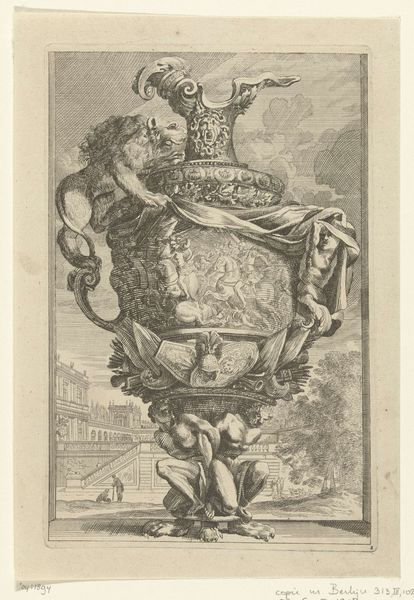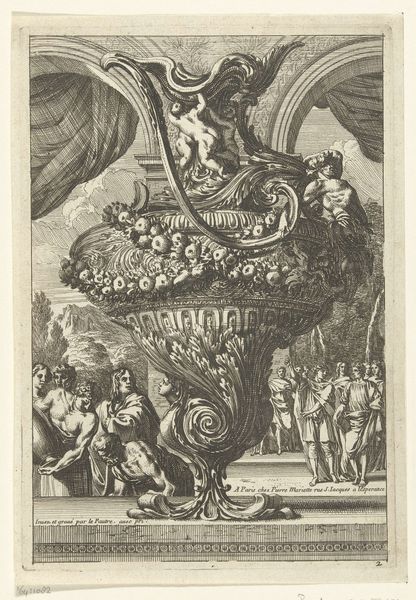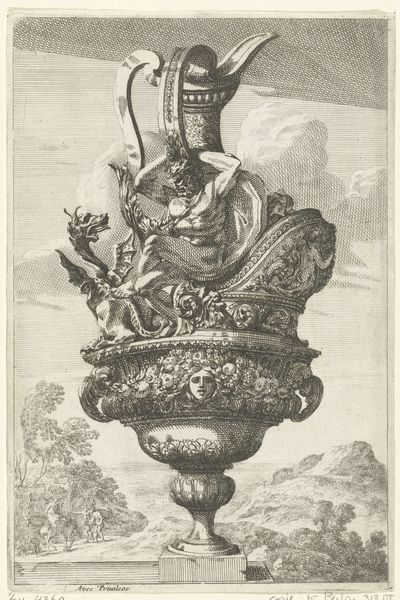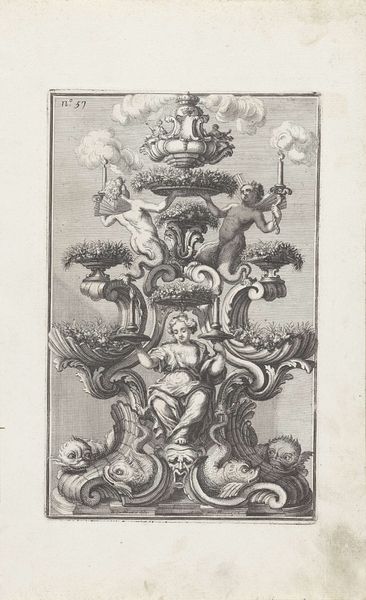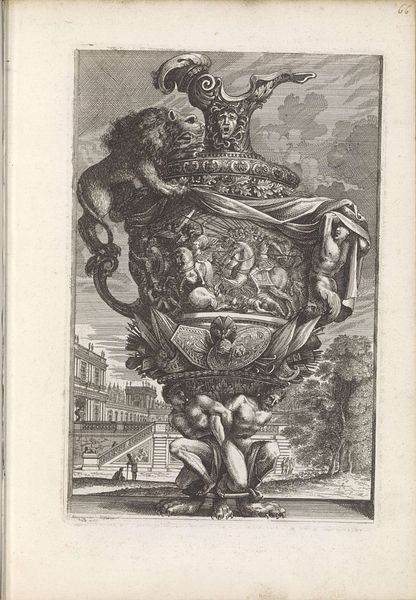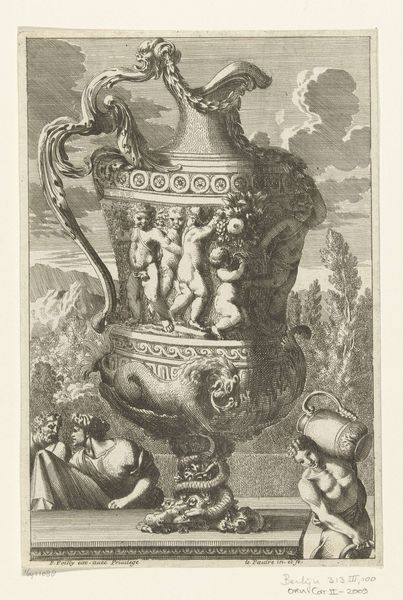
print, engraving
#
allegory
#
baroque
# print
#
old engraving style
#
caricature
#
figuration
#
engraving
Dimensions: height 194 mm, width 130 mm
Copyright: Rijks Museum: Open Domain
Curator: This is an engraving from between 1669 and 1693, now in the collection of the Rijksmuseum. It is called “Schenkkan met twee saters”, or "Ewer with Two Satyrs," and is unsigned. Editor: My initial reaction? Pure baroque excess! The density of detail, the swirling forms—it almost overwhelms the eye. There is certainly visual complexity with the landscape in the background that competes with the characters and vase. Curator: Precisely! The engraving, done in that rich baroque style, demonstrates a mastery of line and form. Consider the dramatic play of light and shadow; the artist uses the engraving technique to create a convincing illusion of three-dimensionality on a two-dimensional surface. How the forms interplay from front to back is compelling. Editor: I am intrigued by what I suspect is an allegory depicted in the primary subject matter, but also who would have commissioned this? What societal function did these kinds of images perform? I assume, considering it's the Rijksmuseum, there must be some Dutch history related to this work? Curator: Well, allegorical themes were certainly common at the time, often functioning as moral instruction or celebrating idealized virtues. Here, you have satyrs, beings from classical mythology associated with revelry, adorning what appears to be an ornate ewer. What semiotic associations might be evoked in the context of viewing this print? Editor: Given the figures in the bottom left foreground of the image looking upon the ewer as it towers above, I wonder how much of the art world at the time this was made could access it. Who was in the “in-crowd” or even allowed at the table to critique this? Curator: Excellent questions! By turning our attention to visual strategies and representational choices, we understand not just the aesthetics but potentially also some symbolic nuances operating here. The contrast with the people to its scale as you noted certainly raises questions around privilege in access. Editor: Agreed! It certainly helps contextualize these artworks when considering that historical framework in which it was created, its reception, and continued life that is quite separated from that time period in Europe. Curator: And it invites us to really see it, perhaps even more deeply than its commissioner originally intended.
Comments
No comments
Be the first to comment and join the conversation on the ultimate creative platform.
